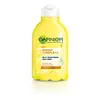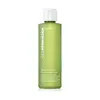What's inside
What's inside
 Key Ingredients
Key Ingredients

 Benefits
Benefits

 Concerns
Concerns

 Ingredients Side-by-side
Ingredients Side-by-side

Water
Skin ConditioningAlcohol Denat.
AntimicrobialGlycerin
HumectantButylene Glycol
HumectantDimethicone
EmollientCyclopentasiloxane
EmollientAscorbyl Glucoside
AntioxidantCapryloyl Salicylic Acid
ExfoliatingCitrus Limon Fruit Extract
MaskingGentiana Lutea Extract
EmollientTocopheryl Acetate
AntioxidantAcrylates/C10-30 Alkyl Acrylate Crosspolymer
Emulsion StabilisingAmmonium Polyacryloyldimethyl Taurate
Emulsion StabilisingSodium Polyacryloyldimethyl Taurate
Emulsion StabilisingDisodium EDTA
T-Butyl Alcohol
PerfumingTriethanolamine
BufferingXanthan Gum
EmulsifyingMethylparaben
PreservativePhenoxyethanol
PreservativeParfum
MaskingBenzyl Salicylate
PerfumingGeraniol
PerfumingLimonene
PerfumingLinalool
PerfumingWater, Alcohol Denat., Glycerin, Butylene Glycol, Dimethicone, Cyclopentasiloxane, Ascorbyl Glucoside, Capryloyl Salicylic Acid, Citrus Limon Fruit Extract, Gentiana Lutea Extract, Tocopheryl Acetate, Acrylates/C10-30 Alkyl Acrylate Crosspolymer, Ammonium Polyacryloyldimethyl Taurate, Sodium Polyacryloyldimethyl Taurate, Disodium EDTA, T-Butyl Alcohol, Triethanolamine, Xanthan Gum, Methylparaben, Phenoxyethanol, Parfum, Benzyl Salicylate, Geraniol, Limonene, Linalool
Water
Skin ConditioningPolysorbate 20
EmulsifyingHamamelis Virginiana Water
AstringentGlycerin
HumectantGluconolactone
Skin ConditioningGlycolic Acid
BufferingLactic Acid
BufferingOleth-20
CleansingSalicylic Acid
MaskingSodium Hydroxide
BufferingSodium Benzoate
MaskingMenthyl Lactate
MaskingEucalyptus Globulus Leaf Oil
PerfumingMentha Piperita Oil
MaskingMelia Azadirachta Seed Oil
EmollientLinoleic Acid
CleansingMacrocystis Pyrifera Extract
Skin ConditioningEucalyptus Globulus Leaf Extract
PerfumingChondrus Crispus Extract
Skin ConditioningCamellia Sinensis Leaf Extract
AntimicrobialLinolenic Acid
CleansingPhenoxyethanol
PreservativeCalcium Gluconate
HumectantBenzoic Acid
MaskingTocopherol
AntioxidantLimonene
PerfumingWater, Polysorbate 20, Hamamelis Virginiana Water, Glycerin, Gluconolactone, Glycolic Acid, Lactic Acid, Oleth-20, Salicylic Acid, Sodium Hydroxide, Sodium Benzoate, Menthyl Lactate, Eucalyptus Globulus Leaf Oil, Mentha Piperita Oil, Melia Azadirachta Seed Oil, Linoleic Acid, Macrocystis Pyrifera Extract, Eucalyptus Globulus Leaf Extract, Chondrus Crispus Extract, Camellia Sinensis Leaf Extract, Linolenic Acid, Phenoxyethanol, Calcium Gluconate, Benzoic Acid, Tocopherol, Limonene
Ingredients Explained
These ingredients are found in both products.
Ingredients higher up in an ingredient list are typically present in a larger amount.
Glycerin is already naturally found in your skin. It helps moisturize and protect your skin.
A study from 2016 found glycerin to be more effective as a humectant than AHAs and hyaluronic acid.
As a humectant, it helps the skin stay hydrated by pulling moisture to your skin. The low molecular weight of glycerin allows it to pull moisture into the deeper layers of your skin.
Hydrated skin improves your skin barrier; Your skin barrier helps protect against irritants and bacteria.
Glycerin has also been found to have antimicrobial and antiviral properties. Due to these properties, glycerin is often used in wound and burn treatments.
In cosmetics, glycerin is usually derived from plants such as soybean or palm. However, it can also be sourced from animals, such as tallow or animal fat.
This ingredient is organic, colorless, odorless, and non-toxic.
Glycerin is the name for this ingredient in American English. British English uses Glycerol/Glycerine.
Learn more about GlycerinLimonene is a fragrance that adds scent and taste to a formulation.
It's found in the peel oil of citrus fruits and other plants such as lavender and eucalyptus. The scent of limonene is generally described as "sweet citrus".
Limonene acts as an antioxidant, meaning it helps neutralize free radicals.
When exposed to air, oxidized limonene may sensitize the skin. Because of this, limonene is often avoided by people with sensitive skin.
The term 'fragrance' is not regulated in many countries. In many cases, it is up to the brand to define this term. For instance, many brands choose to label themselves as "fragrance-free" because they are not using synthetic fragrances. However, their products may still contain ingredients such as essential oils that are considered a fragrance.
Learn more about LimonenePhenoxyethanol is a preservative that has germicide, antimicrobial, and aromatic properties. Studies show that phenoxyethanol can prevent microbial growth. By itself, it has a scent that is similar to that of a rose.
It's often used in formulations along with Caprylyl Glycol to preserve the shelf life of products.
Water. It's the most common cosmetic ingredient of all. You'll usually see it at the top of ingredient lists, meaning that it makes up the largest part of the product.
So why is it so popular? Water most often acts as a solvent - this means that it helps dissolve other ingredients into the formulation.
You'll also recognize water as that liquid we all need to stay alive. If you see this, drink a glass of water. Stay hydrated!
Learn more about Water